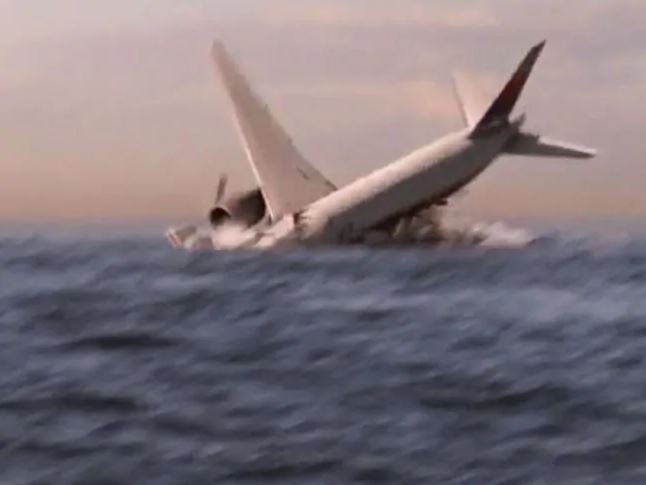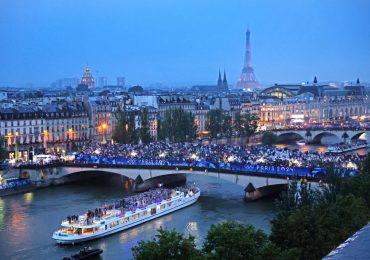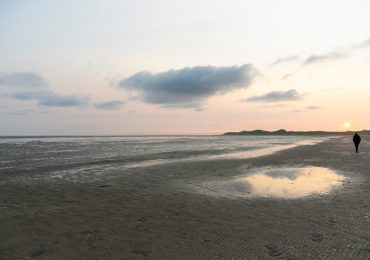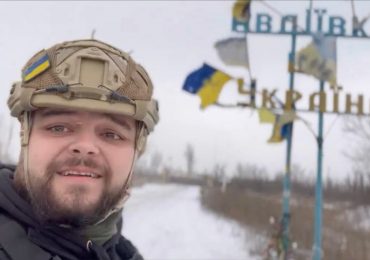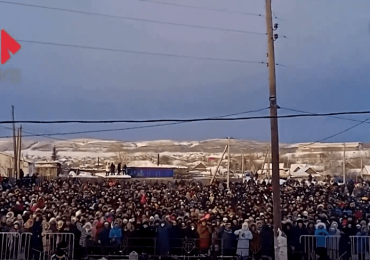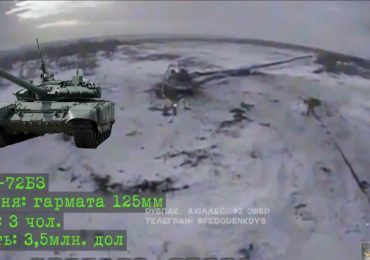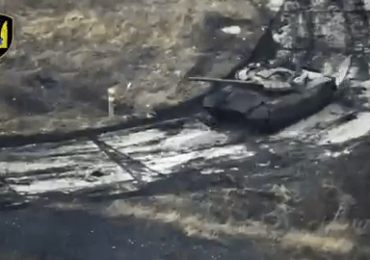A FORMER naval officer involved in the hunt for MH370 believes the pilot of the missing jet deliberately crashed the plane in a never-before-searched location.
Peter Waring, 41, became part of the MH370 search team six months after the aircraft vanished from radar with 239 people onboard on March 8, 2014.
National GeographicA computer-generated images shows what the MH370’s final moments might look like after it’s believed to have plummeted into the Southern Indian Ocean in 2014[/caption]
LinkedinFormer naval officer Peter Waring was part of the MH370 search and says there was no chance experts could have missed wreckage during the hunt[/caption]
While several searches have taken place since, all focusing on an area of the South Indian Ocean, the missing jet has never been found.
The plane’s disappearance remains one of the biggest aviation mysteries of all time and is yet to be solved.
The official narrative suggests the plane executed a dramatic U-turn less than an hour into its planned flight with Zaharie Ahmad Shah at the wheel – before plummeting into the Indian Ocean near an area known as the 7th arc.
Peter, an expert in surveying and mapping sea floors, was bought in to help scan a search area 57 miles wide by 400 miles long pinpointed by experts from satellite data and flight simulations.
He became part of the Joint Agency Coordination Centre (JACC), an Australian government agency formed with the involvement of Chinese and Malaysian authorities in March 2014 to manage efforts to locate the vanished jet.
The search involved several phases, an acoustic search to detect any pings from the plane’s underwater locator beacons, a sonar search of the seafloor and a bathymetric survey to map the depths of the seabed.
An area of ocean dubbed the ‘Broken Ridge’ became the focus of the search – known for its difficult underwater terrain.
Peter joined the hunt in September 2014, spending 12 months co-ordinating the hunt from Canberra and reporting back to officials on how much seafloor crews had been able to cover each day.
Teams of sonar experts onboard three ships, the Go Phoenix, the Fugro Discovery and the Fugro Equator towed sensors – scanning the seafloor in the hopes of locating debris.
However, the former Australian naval officer says it quickly became apparent they were looking in the wrong place for MH370.
He told The Sun that the area was scanned so precisely that there was no chance that the search team could have missed the plane’s wreckage beneath the waves.
The hunt was so in-depth that the crew even discovered the remains of two victorian shipwrecks – but found no debris from the doomed passenger flight.
Because of this, Peter believes that the crash site is further south in a remote area known as Geelvinck Fracture Zone after evidence suggests the plane may have continued to fly undetected.
Talking exclusively to the Sun, Peter said: “I think we[the search team] may have gone wrong with the assumption that the aircraft wasn’t under control at the end.
“We were taking this quite seriously during the search, that the aircraft may have continued to be under control in one form or another after it crossed the 7th arc.
“Once that had happened that means that the aircraft was probably further south.
“…if the aircraft was still under control at the seventh arc then the size of the Indian Ocean they could of of reached is so unimaginably large that you wouldn’t have been able to afford to search it all.
“There was a whole lot wasted effort looking in the wrong areas.”
Talking in his recent podcast The Search for MH370 – Deepest Dive, Peter says their success was measured by how much of the area they had managed to search – not if they were looking in the right spot in the first place.
Peter said: “It was clear to me, that no matter what new evidence arose or what new analysis was undertaken, that the box [search area] would remain the same.”
At this point, the naval officer knew that the search was doomed to fail eventually leaving for a new posting in September 2015.
There was a whole lot wasted effort looking in the wrong areas.
Peter Waring
Peter explains that despite several experts suggesting theories that the plane was ditched on the seventh arc – he believes the theories of expert and Boeing 777 pilot Simon Hardy.
In the final months Peter spent working on the search, the aviation expert was brought in to discuss his hypothesis with specialists in Canberra at the Australian Transport Safety Bureau (ATSB).
Based on his calculations, Hardy thinks “suicidal” Zaharie Ahmad Shah piloted the jet far out into the Indian Ocean, much further than previously thought.
He believes Shah wanted to hide the aircraft forever in a controlled ditching that would limit debris – flying more than 50 miles southwest of the previous search zone.
The expert pilot suggests the plane was downed over the Geelvinck Fracture Zone, a trench around half a mile deep and seven miles wide on the sea floor, knowing it would be difficult to find.
Hardy was able to pinpoint the spot using Immarsat data, his expertise on Boeing 777 performance and what he describes as mathematical “reverse engineering” – tracking the plane back from the Seventh Arc.
Hardy believes the pilot’s actions were deliberate and that they were at the controls when the aircraft went down around 1,500 miles off the west coast of Australia.
Shah is also thought to have carried out a flight simulation similar to the flight path Hardy explains just a month before the jet vanished.
DANGEROUS MISSION
Talking exclusively about the harrowing search mission to The Sun, Peter revealed that his crew faced some of the most dangerous conditions possible at sea.
The former Naval Officer said: “This is arguably the most rough area of ocean in terms of sea state in the world, ships are moving so slowly you could walk faster.
“Not only was the ship moving very slowly, which you don’t do in bad weather, but they were dragging this thing[search equipment] behind them that was two miles deep in the water.
“It’s really dangerous, we were very lucky no one got hurt and or killed and it annoyed me that we were so flippant with their [crew’s] safety.”
Since the plane’s disappearance, the Malaysian Government has faced immense pressure from the victim’s families to find the jet and put an end to their enduring nightmare.
All 12 cabin crew and another 38 passengers were Malaysian, 135 were Chinese while the remaining travellers were Indonesian, Australian, Canadian, French, Indian, Iranian, Dutch, Kiwi, Russian, Taiwanese, Ukrainian and American.
Loved ones faced weeks of misinformation and a lack of updates before eventually being told via text message by Malaysian authorities, “We have to assume beyond any reasonable doubt that MH370 has been lost and that of those onboard survived.”
Peter described the 2015 search that followed as chaotic and hampered by “political and bureaucratic processes.”
GettySeveral searches have taken place for the missing plane that vanished with 239 onboard[/caption]
Getty
60 MINUTES The theory of expert Boeing 777 pilot Simon Hardy suggests the plane is in a never-before-searched location[/caption]
He said: “They called me up, when you’re in the Navy you don’t get much of a choice. I was a hydrographic surveyor, a branch of oceanography.
“My expertise was in sonar equipment and ship operation as well. I’d lived and worked in Malaysia as part of the navy and I think that’s why they asked me to go on the search.
“I was there for a year, we started the underwater search and the strategising about where we would search and why, it was enough time to realise that we were not gonna find the aircraft.
“It was blatantly clear to me and others that we were looking in the wrong place.
“On the one hand, It was a slow-moving bureaucratic political process that wanted something really easy and neat which was a box drawn on a map.
“On the other hand you had one of the most complex mysteries that’s ever occurred and the amount of information was so scarce, so to try and create something out of nothing was really difficult.
“We presented this clean nice neat box for the politicians and then it was obvious to us we might have to go back on our assumptions as the analysis developed and new evidence arose.”
He added: “There was a lot of political pressure to have milestones, part of my job was to report each day on how much of the search area had been covered the previous day.
“The metric of success was only how much of that box we had completed, not if the box was in the right place to begin with.”
Peter says that no stone was left unturned during the search and said the equipment used was so advanced it was able to detect tiny pieces of coal from a disintegrated Victorian shipwreck.
He said: “We found a ship from the 1800s which we thought for six hours was the aircraft.
“It [equipment] picked up little pieces of coal from this ship that were about the size of your fist.”
He said the technology was able to pick up objects smaller than the size of a plane engine part – the measurements the equipment was designed to scope for.
He added: “We had a lot of confidence in the technology.
“I just don’t believe that we missed it.”
HUNT CONTINUES
In the years that have followed the tragic events of March 8, various experts have attempted to identify the passenger plane’s final resting place.
After an initial search over the South China Sea, rescue efforts were moved a week later when communications and satellite data revealed the plane could have been downed in the Southern Indian Ocean.
Between March 18 to April 28, 19 vessels and 345 searches made by military aircraft were involved in the hunt over 1.8million square mile area.
In January 2017, the official search for MH370 was suspended with no answers after proving to be one of the most expensive search operations in aviation history.
The final report revealed the search had cost a whooping £122million to sweep a 9, 700 square mile area.
In January 2018, the private American firm Ocean Infinity continued searching the same 9,700 square mile area before extending its perimeter to 43,000 square miles while using eight autonomous underwater vehicles.
By June the contract with the Malaysian Government ended and the mission to find any MH370 debris was unsuccessful.
In March 2022 Ocean Infinity said it was committed to resuming the search in 2023 or 2024 with its new ‘Armada’ vessel pending approval from the Malaysian Government.
The company claims to have new evidence that they believe could help locate the passenger plane on the sea floor.
Last week fisherman Kit Olver claimed he’d pulled up a passenger plane wing with his trawler net off the coast of southern Australia just six months after flight MH370 vanished.
Olver said he was patrolling his “secret” area for a special species of fish when his fishing net got snagged on something heavy around October 2014.
The stunned fisherman told the Sydney Morning Herald: “It was a bloody great wing of a big jet airliner.
But the retired 77-year-old has only now revealed his discovery nine years after her allegedly called authorities to report the huge piece of debris.
The Australian Maritime Safety Authority say they have no official record of the call.
Pilot Patrick Blelly and aerospace expert Jean-Luc Marchand recently said a new area could be searched in just ten days.
Marchand said: “We have done our homework. We have a proposal … the area is small and considering new capabilities it will take 10 days.”
“It could be a quick thing. Until the wreck of MH370 is found, nobody knows (what happened). But, this is a plausible trajectory.”
Theories and evidence suggest pilot Zaharie Ahmad Shah could have deliberately crashed the passenger jet into the Southern Indian Ocean
GettyThe families of MH370 passengers who were desperate for answers carried out protests after being kept in the dark about search developments[/caption]
AFPWhat happened to the missing jet remains one of the world’s biggest aviation mysteries[/caption]
Leave a comment
